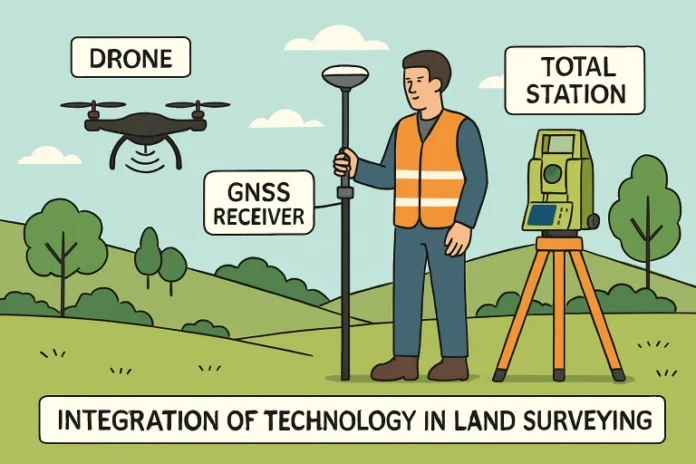The field of land surveying has transformed dramatically in recent years, as technology now plays a leading role in shaping the industry’s standards. This shift has enabled land surveyors to achieve unparalleled accuracy and efficiency, driving innovation and reliability in construction, real estate, and urban planning. Whether you are involved in large-scale developments or local boundary assessments, the increasing integration of modern tools has become essential to ensuring successful outcomes. As these advancements take hold, the demand for precise, comprehensive data has never been higher, especially for specialized projects such as land surveying in Washington, DC, where compliance and precision are critical.
Today, Surveyors operate in a digital transformation landscape, leveraging real-time data collection, enhanced geospatial analysis, and automated reporting. By adopting new technologies and best practices, professionals deliver actionable insights and increased trust in the results. Clients benefit from faster turnaround times and minimized errors, elevating project confidence and efficiency from the ground up.
The continual adoption of advanced surveying methods means understanding foundational concepts and best practices is more critical than ever. This article explores key modern techniques, offers strategies for seamless tool integration, and emphasizes accuracy, standards, and professional development as pillars of practical land surveying.
To stay competitive, today’s surveyors must understand the latest innovations and apply them effectively in diverse environments and challenging project types.
Table of Contents
Embracing Advanced Technologies
At the heart of modern land surveying is the implementation of innovative technologies designed to enhance every stage of the process. These tools have redefined what is possible, pushing the boundaries of accuracy and efficiency in routine and complex environments.
- Global Navigation Satellite Systems (GNSS): Surveyors now rely on GNSS, such as GPS, to access real-time, location-based data with extraordinary precision. Methods like Real-Time Kinematic (RTK) and Post-Processed Kinematic (PPK) increase accuracy to the centimeter level, supporting everything from legal land boundaries to intricate site positioning on construction projects. GNSS advances have been instrumental in mapping and navigation worldwide.
- LiDAR (Light Detection and Ranging) has quickly become a critical instrument for capturing detailed three-dimensional terrain data. By analyzing laser pulses, this technology records millions of elevation points per second, producing highly accurate digital models of landscapes, vegetation, and structures—especially in locations normally difficult to access.
- Unmanned Aerial Vehicles (UAVs): Aerial drones with high-resolution sensors have revolutionized data collection by surveying large or hazardous sites quickly and safely. They produce orthophotos and 3D models in hours, rather than days, allowing surveyors to collect detailed information efficiently and without risking physical harm.
Integrating Data Collection and Analysis Tools
The power of modern land surveying lies not just in these technologies individually, but in how well they work together within comprehensive workflows. Efficient hardware and software integration multiplies productivity and accuracy for teams on the ground.
- Total Stations: These versatile instruments integrate advanced theodolite and electronic distance measurement capabilities, directly bringing precise angular and linear measurements to the surveyor’s fingertips. Automation features and built-in data collectors reduce manual entry and human error, streamlining every aspect of field work.
- 3D Modeling and Visualization Software: Advanced software transforms raw data into immersive digital models, facilitating superior communication between stakeholders, including engineers, architects, and developers. These models can uncover potential issues before they escalate, promote collaborative problem-solving, and support better-informed decision-making for all involved.
Ensuring Accuracy and Compliance
While technology continues to expand the possibilities, disciplined adherence to established standards and protocols remains the backbone of successful land surveying.
- Regular Calibration: Precision equipment must be carefully maintained. Regular calibration of all devices ensures the integrity of the collected measurements and guarantees that data remains accurate from the initial field collection to project delivery.
- Adherence to Standards: National and international standards help bring consistency and trust to surveying projects. Applying these guidelines protects survey results from legal and regulatory challenges, offering peace of mind to clients and stakeholders alike.
- Continuous Education: The pace of technological innovation demands that land surveyors remain proactive in updating their education. Engaging in ongoing learning—whether through courses, certifications, or professional networks—ensures that the workforce can maximize technology while maintaining rigorous best practices. Authoritative organizations such as the National Society of Professional Surveyors provide resources and opportunities to stay current.
Also Read : How Weather and Usage Shape the Lifespan of Sports Courts
Conclusion
Adopting modern technologies and adherence to best practices in land surveying benefits every project by delivering higher accuracy, improved safety, and reduced costs. By intelligently integrating advanced tools and following industry standards, surveyors can provide the detailed, reliable data required in today’s demanding environments. Ongoing education and regular calibration will remain essential as the evolution of surveying equipment continues to reshape the field. Surveyors committed to these principles stand best equipped to meet future challenges—and to provide exceptional outcomes for clients and communities.
